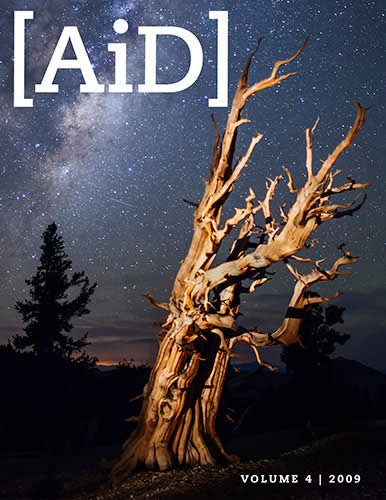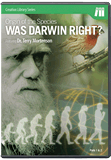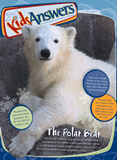
Interpreting an Unusual Arctic Bear within a Creation Model of Origins
Abstract
On April 16, 2006, on the south end of Banks Island, that a 65-year-old hunter shot and killed the first documented grizzly/polar hybrid (grolar bear) in the wild.
Keywords: Arctic, bears, polar bear, grizzly bear, National Geographic, Banks Island, DNA, species, speciation, hybrid, worldview
Introduction
On June 29, 2009, National Geographic aired a program called Mystery Bear of the Arctic. The show detailed a most bizarre and unusual find that has been traveling the international news circuit since 2006. It was April 16 of that year, on the south end of Banks Island, that a 65-year-old hunter shot and killed the first documented grizzly/polar hybrid (grolar bear) in the wild. DNA results confirmed that this creature was a product of a male grizzly (Ursus arctos) and a female polar bear (Ursus maritimus).1 The anomalous animal was mostly white with brown splotches but had the grizzly traits of long claws, concave face, and humped back. What are the implications of such a creature within a creation model of ecology and baraminology?2
The Bears of the World
From ancient times bears have captivated the imagination. People have cherished their likeness as toys, political emblems, and symbols of strength and great courage. They have also been feared and misunderstood, and this led to their widespread elimination.3 Because of extensive killing and habitat destruction, the survival of many species is a conservation concern, which is why they are probably the most studied carnivore.4 Compounding matters, advocates that support anthropogenic climate change feel that the extinction of polar bears is a real possibility if the Arctic ice melts into oblivion. These concerns have brought bears into the media spotlight, and it is important to get a perspective of this magnificent creature within a creation model of origins.
The word bear finds its etymological origins in the Indo-European root bher, which is also the basis for other words such as burial, berserk, and bearing young.5 Table 1 summarizes the descriptions, range, chromosome numbers, and subspecies of the eight extant bear species.6, 7, 21 Table 2 highlights various bear adaptations, behaviors, and conservation status. Worldwide, bears inhabit Eurasia, North America, and South America, and there is fossil evidence suggesting that extinct bears also roamed Africa. There is no evidence that bears ever occupied Australia.21
Table 1: Ursidae Descriptions, Ranges, Chromosomes, and Subspecies
| Descriptor | Physical Description | Range | Number of Subspecies | Chromosome Number |
|---|---|---|---|---|
|
Sun
Ursus malayanus |
Smallest bear, short, black fur, light colored crescent on chest, large paws, long claws | Eastern Himalayas, China, Malayan Peninsula | 2 | 74 |
|
Sloth
Ursus ursinus |
Very shaggy black coat with mixed gray/brown hair, light colored Y or U shape on chest, light colored muzzle, can close nostrils | Mostly India, Nepal, Sri Lanka, Bangladesh | 2 | 74 |
|
Brown
Ursus arctos |
Dark brown to cream to black, guard hairs can have white tips to give “grizzled” appearance, shoulder hump, box-shaped nose, dish shaped profile, longer claws on front than back feet | Widest distribution of all bears and includes Eurasia and western NA, 2nd largest home range | Variable 5–90 | 74 |
|
Polar
Ursus maritimus |
Largest bear, long neck, white fur, triangular profile, no shoulder hump, black skin, very wide paws for paddling, considered a marine mammal | Circumpolar Arctic regions, multi-continental, largest home range | 0 | 74 |
|
American Black
Ursus americanus |
Medium size, found in many different color phases, including black, chocolate, cinnamon, pale blue, and white | USA, Canada, and Northern Mexico | 16 | 74 |
|
Asiatic Black
Ursus thibetanus |
Medium sized bear, mostly black but also has a brown phase, muzzles are light colored, all have a cream-colored V-shaped marking on chest | Southern & eastern Asia, including Pakistan, Korea, and Afghanistan | 1 | 74 |
|
Andean
(Spectacled) Tremarctos ornatus |
Small bear with cream colored facial markings around eyes that give it the name “spectacled” bear | Forested mountains of South America | 0 | 52 |
|
Giant Panda
Ailuropoda melanoleuca |
Small black and white bear, shortened muzzle, large black eye patches, most of torso and head are white, black “saddle” and fore- and hind limbs | Six small regions of southwest China, may have smallest home range | 0 | 42 |
Table 2: Ursidae Comparative Behaviors and Conservation Status
| Descriptor |
Winter Dormancy
Not Obligate |
Feeding Behavior
Number of Teeth |
Delayed Implan- tation |
Unique Behaviors
& Daytime Activity |
Conservation Status |
|---|---|---|---|---|---|
| Sun Bear | Yes |
Omnivore;
mostly frugivorous 42 |
Yes |
Makes nests in
trees and
sleeps in them,
much unknown; variable mostly diurnal and crepuscular |
Vulnerable
Declining |
| Sloth Bear | No |
Omnivore;
insect specialist 40 |
Yes |
Slow walking,
no upper
incisors so they
can make a tube
out of mouth and
“vacuum” insects;
mostly nocturnal and crepuscular |
Vulnerable
CITES Appendix I |
| Brown Bear | Yes |
Omnivore;
mostly plants; variable 42 |
Yes |
Observed far north
riding ice flows,
wild hybrids with
polar bears, may
be heavily
carnivorous;
variable, mostly crepuscular |
Threatened
CITES Appendix I |
| Polar Bear |
Yes
Pregnant Females |
95% carnivore;
fruits; kelp 42 |
Yes |
Except for pregnant
and nursing
mothers, don’t
hibernate, fasts
during summer
months;
mostly diurnal |
U.N
Vulnerable USA Threatened Russia/Canacla Species of Concern |
| American Black Bear |
Yes
|
Omnivore;
mostly plants; eats a variety of foods 49 |
Yes |
Excellent tree
climbers,
“bear nests”;
mostly diurnal but varies with season and life history |
Estimated
450,000 in
North
America
Game Species |
| Asiatic Black Bear |
Sometimes
body temps. may drop 3–7º C |
Omnivore;
mostly plants; bamboo 42 |
Yes |
50% time may be
spent in trees,
may migrate
rather than
hibernate,
“bear nests”; mostly nocturnal but varies by region |
Vulnerable
CITES Appendix I Sub-species is Critically Endangered |
| Andean Bear | No |
Omnivore;
mostly plants; Bromeliacea 42 |
Yes |
Best tree
climbers, will
make feeding
and sleeping
platforms in
trees;
generally nocturnal and crepuscular |
Vulnerable
CITES Appendix I |
| Giant Panda | No |
Omnivore;
99% bamboo; eats some meat 42 |
Yes |
Not very active,
sleep most of
day, radial
sesamoid for
eating bamboo,
smallest of cubs;
generally crepuscular but varies |
Endangered
CITES Appendix I Declining |
Family Ursidae is comprised of three subfamilies. Ailurinae contains the giant panda (Ailuropoda melanoleuca), the famous “umbrella” species for conservation, with 42 chromosomes and distinctive white face and black eye patches. Tremarctinae consists of the only extant member of the short-faced bears, the tropical Andean or spectacled bear (Tremarctos ornatus) of South America with its distinctive cream-colored “spectacled” face and 52 chromosomes. Ursinae, whose members have 74 chromosomes, comprise the rest of the species and include the smallest sun bear (Ursus malayanus) with the distinctive light crescent on its chest; the shaggy sloth bear (U. ursinus), characterized by its light colored U or Y chest pattern; the grizzled brown bear (U. arctos), recognized by its shoulder hump and boxed nose; the carnivorous polar bear (U. maritimus) of the circumpolar regions; the variably colored American black bear (U. americanus), the most numerous of bear species; and the Asiatic black bear (U. thibetanus), delineated with a cream-colored V on its chest.
Have Other Bear Species Hybridized?
Both creationists and evolutionists agree that extant bears have diversified rapidly, but because of their differing presuppositions, the time frames for this rapid speciation are quite different. For the evolutionists, the rapid radiation has occurred since the Miocene-Pliocene boundary about 5 million years ago.4 For the creationist this diversification has taken place even more rapidly, since the Flood, in 4500 years or less.
Could the ability to hybridize be one factor in this rapid radiation? Historical records document that seven of the eight species in Ursus readily hybridize with one another. Table 3 summarizes the most current documentation of ursid hybrid pairings: Sun × Sloth,8, 9 Sun × Asiatic Black,10 Asiatic Black × Brown,11, American Black × Brown11, a possible Asiatic Black × American Black12 and numerous instances of captive Brown × Polar13, 14.
In the study of baraminology, a unique creationist biosystematic method for determining the created kinds (Heb. bara = created, min = kind), hybridization ability demonstrates continuity (or significant holistic similarity) from the biochemical cellular levels to the developmental anatomic levels such that the members must be closely related and part of the same kind.15 Therefore, hybridization ability makes them a monobaramin, defined as a group of organisms who share significant holistic similarity with one another, without considering discontinuity.16 Because hybridization is well documented with seven of the eight Ursid species, and there are numerous common genetic and morphological traits between all eight ursids, the whole group has been classified as a monobaramin by other creationist authors.17, 18, 19
Table 3: Ursid Hybrids
| Hybrid Pairing | Wild or Captive | Fertility | References |
|---|---|---|---|
|
U. malayanus (♀) × M. ursinus (♂)
Sun Bear × Sloth Bear |
Captive | Unknown |
Asakura, 1969
Scherren, 1907 |
|
U. matayanus × U. thibetanus
Sun Bear × Asiatic Black Bear |
Wild | Probable | Galbreath et al. 2008 |
|
U. thibetanus (♀) × U. arctos (♂)
Asiatic Black Bear × Brown Bear |
Captive | Unknown | Gray, 1972 |
|
U. americanus × U. thibetanus
American Black Bear × Asiatic Black ? |
Wild
? |
Unknown | Hybrid Bears, 2009 |
|
U. americanus (♀) × U. arctos (♂)
American Black Bear × Brown Bear |
Captive |
Unknown
3 cubs |
Gray, 1972 |
|
U. arctos (♀) × U. maritimus (♂)
Brown Bear × Polar Bear |
Captive | Fertile |
Kowalska, 1962, 1965, 1969
Martin, 1876, 1882 |
|
U. maritimus (♀) × U. arctos (♂)
Polar Bear × Brown Bear |
Captive | Fertile | Gray, 1972 |
|
Tremarctos ornatus × U. thibetanus (♂)
Spectacled Bear × Asiatic Black |
Captive | Fertile | McLellan & Reiner 199420 |
|
U. maritimus (♀) × U. arctos (♂)
Polar Bear × Brown Bear |
Wild | Fertile |
Hybrid Bears, 2009
Doupé et al., 2007 |
Recent research suggests that the ursids may be holobaraminic.21 This means that not only are they monobaraminic, but they are also apobaraminic, meaning that the group is bounded by significant holistic differences (discontinuity), when compared with other taxa, without regard to the similarities between ursids. These differences include less-developed carnassial teeth, general flexibility to switch food sources in a changing environment, unique bile salt metabolism (with the exception of the Giant Panda), unique hibernation metabolism compared to other animals that hibernate, plantigrade foot anatomy, big toe placement on the outside of foot,22 gross morphology, and premature birth with the smallest young per size of the mother than any other placental mammal. 23
Through successive approximation, if it can be demonstrated that bears are both monobaraminic and apobaraminic, they are classified as a holobaramin.16 Previously, creationists, have discussed how natural selection, not to be confused with molecules-to-man evolution, may explain both the grolar bear and how bears have diversified over time within a creation model of origins.24, 25 However, calling upon natural selection as an explanation may not be the only factor. Fascinating ecological and genetic data continue to be discovered and provide promising and fruitful research foci for creationists. For those who desire to study God’s creation from a biblical perspective, it is important to produce a more robust model of origins than a model that assumes random, non-intelligent processes.
For Future Research
After Noah released the animals, the world they reentered was not the same.
It is believed in creation biology that Jesus created his creatures to persist.26 After Noah released the animals, the world they reentered was not the same. It was a devastated world in the throes of a divine judgment, the magnitude of which had never been seen before nor has it been seen since. Ecosystems were different and in constant flux for long periods of time. It was a world where God’s creatures had to be able to adapt to new and drastically changing conditions.27, 28
Therefore, it makes sense that these creatures were endowed by their Creator with the genetic mechanisms that would allow them to change with fluctuating environmental conditions. Exciting new research continues to suggest that genetic mutations affecting the survival of an organism may not be random, but directed, in the presence of certain environmental cues. This is a direct prediction of a biblical creation model. These seemingly directed changes, caused by environmental factors, can occur and have been documented in bacteria,29, 30 insects,31 and possibly cattle32 to name just a few. Concerning karyotype rearrangement moving in a single direction and becoming fixed in the populations of pandas and spectacled bears, one set of evolutionary authors pondered the idea that the genome seems to “possess a built-in capacity to modify chromosome number, such that an increase is triggered by environments characterized by intense selection.”33
Fruitful creation research should look for designed genetic mechanisms that are triggered by environmental cues. Furthermore, recent data suggest that many of the morphological differences, especially in the cranial and mandibular shapes of both extant bears and two extinct species, the short-faced bear (Arctodus simus) and the European cave bear (Ursus spelaeus), are more indicative of diet and feeding behavior than classic evolutionary, common-descent, mechanisms.34
Bears are known for their adaptability to new environments and food sources. Recent observations made in 2003 and 2004 documented transient grizzlies regularly visiting the polar bear’s traditional domain of the Canadian Arctic Archipelago and riding on sea ice.35 Up until this time, no one knew that the grizzly, known for its mastery of the Arctic tundra, had ever traveled to the high arctic latitudes. Ability to hybridize, designed genetic mechanisms in order to meet survival requirements in changing ecosystems, and morphological differences caused by dietary flexibility are promising areas for creationist research. They also provide reasonable hypotheses for explaining how bears could experience rapid intrabaraminic diversification in just a few thousand years.
Conclusion
Worldview is critical to how we interpret the creation around us. Worldview affects our scientific interpretations, and these interpretations are at the heart of the creation/evolution issue. This issue is not about “science verses religion,” but a struggle between a biblical worldview that posits that life is designed versus a humanistic worldview that posits that life is random. As Christians who enjoy science, we have the Word of the Creator, endorsed by the Lord Jesus Christ, as our foundation upon which we build our creation models. Scientific models come and go, but the Word of the Lord stands forever.36
Who would have thought that on that spring day in the high arctic, Jim Martell would shoot an anomalous ursid? Rather than being a mystery creature, this magnificent animal would be a testament to the power, judgment, and grace of the Creator of bears.
Footnotes
- Photo in the News: Polar Bear-Grizzly Hybrid Discovered, accessed 30 June 2009.
- Frair, W, Baraminology: Classification of Created Organisms, CRSQ 37no. 2 (2000) 82–91.
- Vaughn, M.V. and Fuller, T.K. ed., Ursus Volume 11, A selection of papers from the 11th International Conference on Bear Research and Management (Graz, Austria: International Association for Bear Research and Management, 1999), p. 22.
- Krause, J., Unger, T., Nocon, A., Sapfo-Malaspinas, A., Orestis-Kolokotronos, S., Stiller, M., Soibelzon, L., Spriggs, H., Dear, P.H., Briggs, A.W., Bray, S.C.E., O’Brien, S.J., Rabeder, G., Matheus, P., Cooper, A., Slatkin, M., Pääbo, S., and Hofreiter, M., Mitochondrial Genomes Reveal an Explosive Radiation of Extinct and Extant Bears near the Miocene-Pliocene Boundary, BMC Evolutionary Biology 8 no. 220 (2008), Pub. Online doi:10.1186/1471-2148-8-220.
- Breiter, M., Bears: A Year in the Life (Buffalo, NY: FireFly Books, 2005), p. 13.
- The Bear Den, American Zoo and Aquarium’s Bear Taxon Advisory Group, accessed 1 July 2009.
- North American Bear Center, accessed 30 June 2009.
- Asakura, S., A Note on a Bear Hybrid, Melursus ursinus × Helarctos malayanus, at Tama Zoo, Tokyo, Int. Zoo Ybk, 9 (1969):88.
- Scherren, H., Some Notes on Hybrid Bears, Proc. Zool. Soc. London (1907), 431–435.
- Galbreath, J., Hunt, M., Clements, T., and Waits, L., An Apparent Hybrid Wild Bear from Cambodia, Ursus 19 no. 1 (2008), 85–86.
- Gray, A., Mammalian Hybrids, second edition, (Edinburgh: Commonwealth Agricultural Bureaux, 1972).
- Hybrid Bears, accessed 1 July 2009.
- Kowalska, Z., Intergeneric Crossbreed of the Brown bear Ursus arctos L., and the Polar Bear Thalarctos maritimus (Phipps), Przeglad Zoologiczny 6 (1962):230, 1 pl. [Polish with English summary]; Cross Breeding between a Female European Brown Bear and a Male Polar Bear in Lodz Zoo, Przeglad Zoologiczny, 9 (1965):313–319, [Polish with English summary]; 1969. A Note on Bear Hybrids Thalarctos maritimus and Ursus arctos at Lodz Zoo, International Zoo Yearbook 9 (1969):89.
- Martin, P.L., Ursus arctos and Ursus maritimus: On Bastards Between These Species Born in Nill’s Menagerie at Stuttgart, Zoologische Garten, 1876:20–22 [Zoologische Garten, 1877:135–136. W. Stendell and E. von Martens, tom. cit., pp. 401–402]; 1882. On a Hybrid Between a Male Ursus maritimus and a Female Ursus arctos; Pederson, A, “Der Eisbär,” Neue Brehm Büch 201 (1957): 1–64.
- Genesis 1–2.
- Wood, T.C., Wise, K., Sanders, R., and Doran, N., A Refined Baramin Concept, Occasional Papers of the BSG No. 3 (2003), 1–14.
- Tyler, D.J., 2006. Polar bears . . . One of a Created Kind, Origins 44 (2006):8–11; 1997. Adaptations within the Bear Family: a Contribution to the Debate about the Limits of Variation, Creation Matters: 2 no. 5 (1997): 1–4.
- Wood, T.C., The Current Status of Baraminology. CRSQ 43 no. 3 (2006):149–158.
- Weston, P. and C. Wieland., Bears across the World. Creation Ex Nihilo 20 no. 4 (1998):28–31
- McLellan, B. and D. Reiner. 1994. A review of bear evolution. Int. Conf. Bear Res. and Manage. 9(1): 85-96.
- Hennigan, T, 2009. The Current Taxonomic Status of Family Ursidae: the Baraminological Implications, in Occasional Papers of the BSG, No. 12, Genesis Kinds: Creationism and the Origin of Species: Proceedings of the eighth BSG Conference, ed. Roger Sanders, in press.
- Lindburg, D. and K. Baragona, ed., Giant Pandas: Biology and Conservation (Berkeley, CA: University of California Press, 2004), pp 38–46.
- Breiter, M., Bears: A Year in the Life (Buffalo, NY: FireFly Books, 2005), p. 34.
- Lamb, A., The Pizzly: a Polar Bear/Grizzly Bear Hybrid Explained by the Bible, accessed 30 June 2009.
- Davis, B., Bearing out Natural Selection, accessed 30, June 2009.
- Genesis 1, Isaiah 45:18
- Hennigan, T., Purdom, G. and Wood, T.C., Creation’s Hidden Potential, Answers, January–March 2009, pp. 70–75.
- Lightner, J., Life: Designed by God to Adapt, Answers in Depth 3 (2008).
- Minoia, M., Gaillard, M., Reinhard, F., Stojanov, M., Sentchilo, V., and vander Meer, J.R., Stochasticity and Bistability in Horizontal Gene Transfer Control of a Genomic Island in Pseudomonas, PNAS 105 no. 52:20792–20797.
- Purdom, G. and Anderson, K., Analysis of Barry Hall’s Research of the E. coli ebg operon: Understanding the Implications for Bacterial Adaptation to Adverse Environments, in Proceedings of the Sixth International Conference on Creationism, ed. A. A. Snelling (Pittsburgh, PA: Creation Science Fellowship and Institute for Creation Research, 2008), pp. 149–163.
- Lightner, J., Patterns of Change over Time: Organophosphorus Resistance in the Australian Sheep Blowfly, Lucilia cuprina, Journal of Creation 22 no. 1 (2008): 81–84.
- Lightner, J., Karyotype Variability within the Cattle Monobaramin, Answers Research Journal 1 (2008): 77–78.
- Nash, W.G., Weinberg, J., Ferguson–Smith, M.A., Menninger, C. and O’Brien S.J., Comparative Genomics: Tracking Chromosome Evolution in the Family Ursidae Using Reciprocal Chromosome Painting, Cytogenetics and Cell Genetics 83: 182–192.
- Figueirido, B., Palmqvist, P., Pérez-Claros, J.A., Ecomorphological Correlates of Craniodental Variation in Bears and Paleobiological Implications for Extinct Taxa: an Approach Based on Geometric Morphometrics, Journal of Zoology 277 (2009): 70–80.
- Doupé, J.P., England, J.H., Furze, M., Paetkau, D., Most Northerly Observation of a Grizzly Bear (Ursus arctos) in Canada: Photographic and DNA Evidence from Melville Island, Northwest Territories, Arctic 60 no. 3 (2007): 271–276.
- 1 Peter 1:25.
Recommended Resources

Answers in Genesis is an apologetics ministry, dedicated to helping Christians defend their faith and proclaim the good news of Jesus Christ.
- Customer Service 800.778.3390
- © 2024 Answers in Genesis




